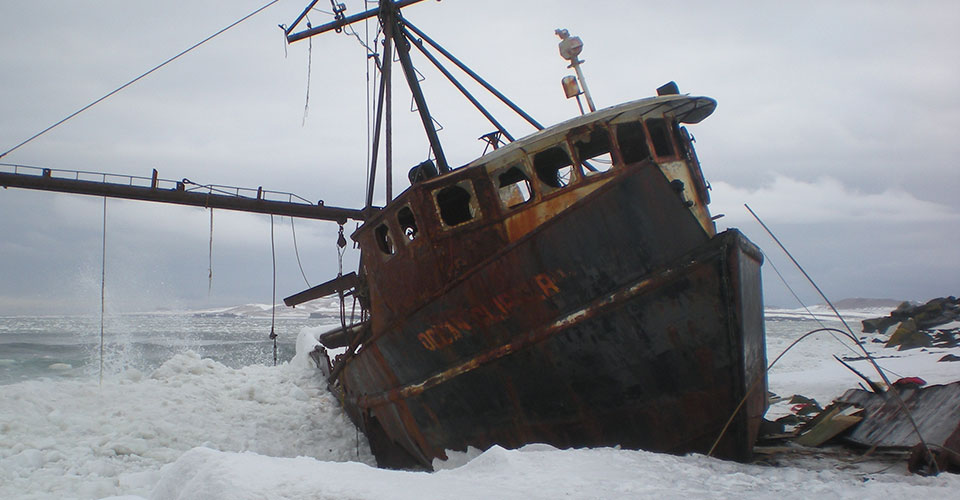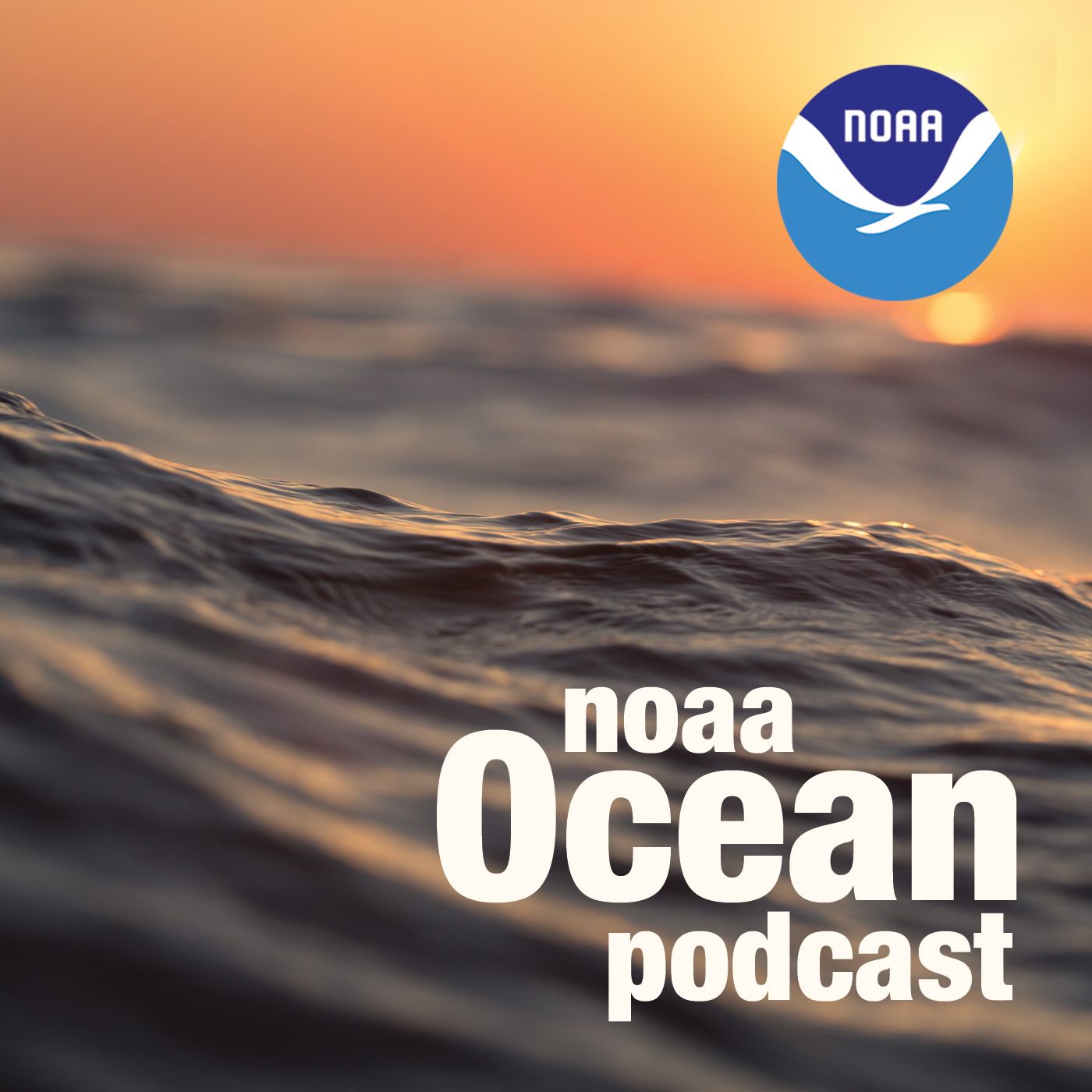Native American Heritage: Marine Debris in Alaska
NOAA Ocean Podcast: Episode 11
It's time for a NOAA Ocean Podcast "Science Moment," where we sample the best segments from our past full-length podcasts. November is Native American Heritage Month. In celebration, our latest podcast highlights NOAA efforts in partnership with native communities in Alaska to restore and protect precious ocean resources. In this episode, we learn just how challenging the issue of marine debris can be in the vast wilderness of Alaska, how the NOAA Marine Debris program is working to solve this problem, and how the key to beating this issue is in the innovation and ingenuity of the community working to address it.

Marine debris comes in all shapes and sizes. This vessel, the F/V Ocean Clipper went aground on Alaska's St. Paul Island in the late 1980s. St. Paul Island is part of the Pribilof Islands, and is home to many native Aleut, Eskimo and Indian populations.
Transcript
HOST: It's time for a NOAA Ocean Science Moment! I'm Megan Forbes. November is Native American Heritage Month, and in celebration of our Native American partners, we are highlighting the work NOAA has done in partnership with native communities in Alaska to restore and protect precious ocean resources. The State of Alaska is rich in cultural heritage, with five distinct geographic regions shaping its traditional life…and more than 20 languages telling the stories and songs of Alaska Native people. A large part of their story involves the ocean, its protection and its resources. NOAA’s Marine Debris Program recently teamed up with the Sitka Sound Science Center and three remote communities to clean up marine debris on local shorelines in the Bering Sea region of Alaska. Cleanup crews for this project come entirely from the native communities and use local expertise in debris "hotspots," as well as the best techniques to remove the debris. The project is one of many in the Alaskan region aimed at preserving its natural beauty and bounty for years to come.
Now listen back on my conversation with Peter Murphy, the Marine Debris Program Regional Coordinator for Alaska, as he describes what it is like to work in this region:
Peter Murphy: The state of Alaska is a big place, it's vast. It has more shorelines than the rest of the United States combined, and even on a mile for mile basis, Alaska has some of the heaviest debris concentrations or densities we see. So that's a big part of the issue—you have a lot of shoreline, but also it can be very dirty shoreline. Alaska is also remote—people think of Alaska they think of a place that is wilderness, it's rugged; that's true and additionally that means that some of these places where debris tends to pile up or aggregate, we call them "catcher beaches", these can be really far from roads, landfills, the logistics or the infrastructure that you normally need to actually get people there and to remove that debris."
One of the most notable "catcher beaches" in Alaska is a place called Gore Point. It sticks out almost like a hook into the Gulf of Alaska current. Every year a lot of debris piles up there. As a matter of fact, in 2007-2008 there was a cleanup effort that removed over 20 tons from less than a mile of shoreline. That's a lot of debris in a very small area. Part of the reason that a lot of the debris shows up there is that they are high energy beaches—they have big waves, big storms, big winds, so you also have the challenge of getting safely on to the beach and getting safely off as well. Those are the types of things that make it more complicated to work in Alaska.
HOST: With so much of Alaska’s shoreline being difficult to access, and the problem of marine debris in our waters continuing, I asked Peter what he was hoping to attain with the Marine Debris Program efforts in this region.
Peter Murphy: The issue of marine debris is a diverse and challenging problem, but it’s also an intuitive one. It’s diverse and challenging in the sense that it’s everything from these very large pieces of debris, like vessels or huge fishing nets floating out in the ocean, all the way down to things like microplastics – whether those are pre-production pellets, or the little bits of plastic in face wash – these tiny bits of plastic. Even though [marine debris] is all these different things, it is an intuitive problem. People understand it. There’s garbage in the ocean, and that’s bad. That also means it’s a solvable problem! People can understand it and can see that there are ways that they can change behaviors to prevent it.
The big goal for Alaska, and for marine debris as an issue in general, is really to understand and address the impacts. So for Regional Coordinators like me, that means supporting the community in Alaska, in the region, and finding ways to use what we have to better understand how much debris there is, what impacts it's having and finding the best ways to stop those impacts. Often the best place to stop marine debris from happening is on land…changing behaviors to stop the flow of debris into the oceans, where it can be difficult and expensive to remove—especially in places like Alaska where things are so remote. I'm part of an active and innovative marine debris community in Alaska and nationwide, and that's something that NOAA is proud to be a part of and supporting.
HOST: We hope you’ve enjoyed this Ocean Science Moment! If you liked this podcast and want to hear more search for The NOAA Ocean Podcast in your catcher of choice, or visit oceanservice.noaa.gov. Until next time…thanks for listening!

From corals to coastal science, connect with ocean experts to explore questions about the ocean environment.
Subscribe to Feed | Subscribe in iTunes
Browse All Episodes of the NOAA Ocean podcast